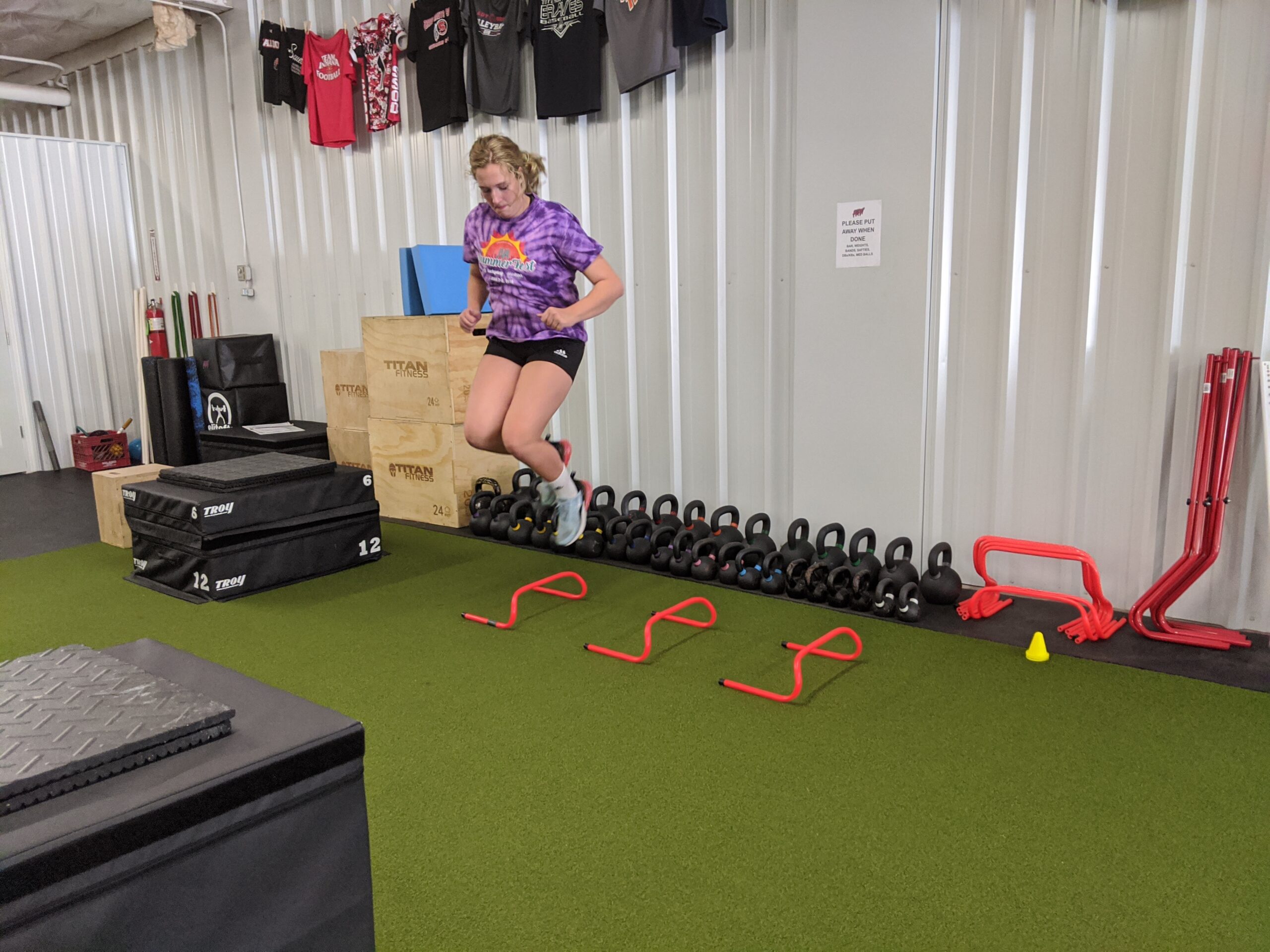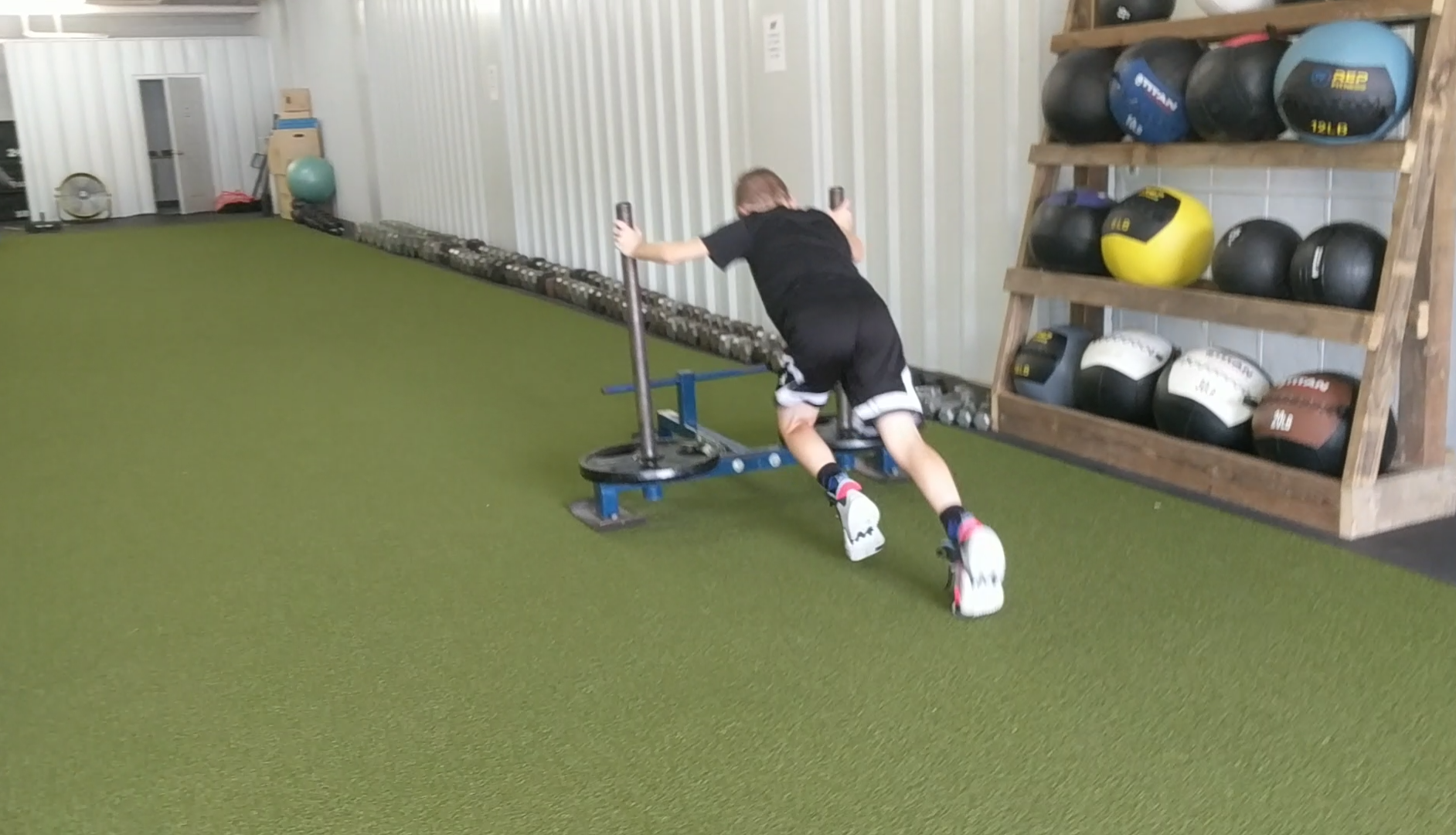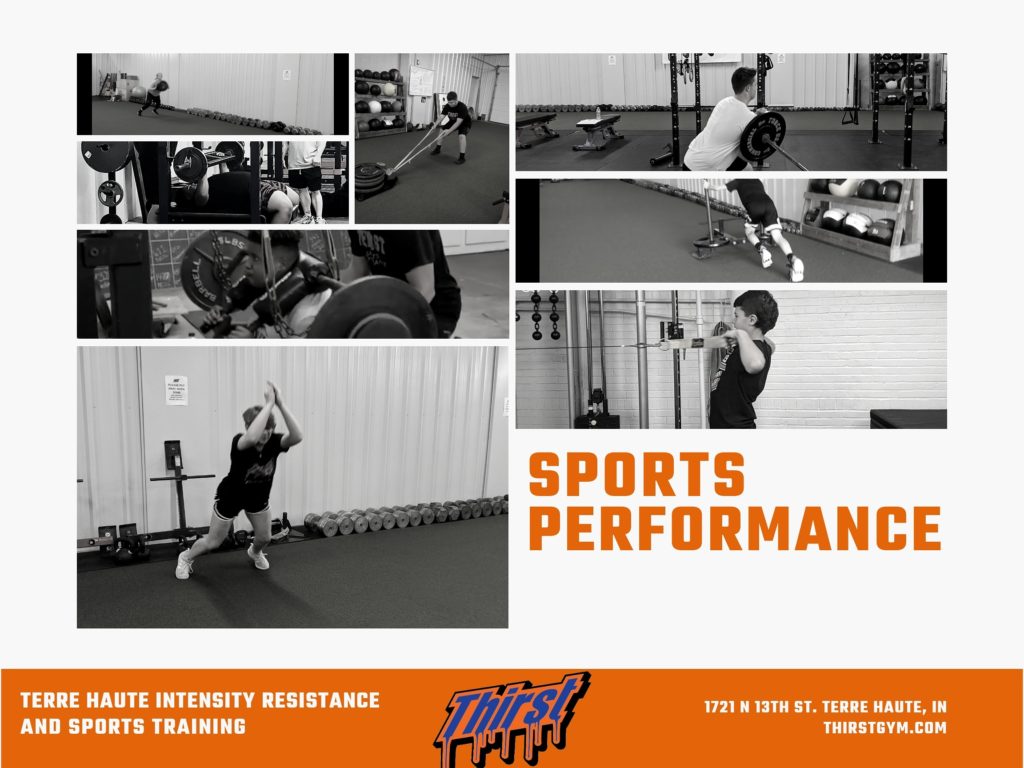The Truth About Speed And Agility Training
As a premiere sports performance facility in our area, the number one thing parents come to us looking to do is improve speed and agility. Luckily, I know what they are trying to tell me without them actually telling me – they want their kids to have an edge.
Most people see speed and agility as speed ladders and fancy footwork drills, but in all reality these are quite useless in terms of developing true athletic performance and speed. Do cones, speed ladders, and footwork drills have their place? Sure, somewhere in the annual training plan we can make a case to use some of these things, especially to develop positioning (like making a cut to a basket). However, these should not be performed for 45-60 minutes to make athletes tired. This is not only reckless but in fact, training the wrong energy system (aerobic conditioning) when we’re looking to develop power and speed.
SPEED KILLS!…AND AGILITY LADDERS KILL SPEED!
Some Simple Science And Terms
First off, we need to clear up what is “speed” and what is “agility”?
Speed is defined as the rate at which someone or something is able to move or operate.
Agility is defined as the ability to move quickly and easily.
There are two scientific ways to get faster in the strength and conditioning realm: increased force and increased rate of force produced. So anything we want to do to get faster MUST fall under one of these two main categories at the cellular level. Yes, you can get faster by having improved spatial awareness and mechanical steps (positioning), but once these are optimized you’ve only got two options.
Increasing force is a simple way to say “get stronger!” While improving the rate of force is a simple way to say display that strength that you have faster.
The other thing we need to ensure is that there are different kinds of speed and agility that need to be developed based upon what sport the athlete competes in. We have the following types of speed and agility traits that helps athletes perform better, and this is how we divide up our training:
- Lateral Speed (shuffling and side-to-side work)
- Linear Speed (sprinting and moving straight forward)
- Change Of Direction (moving in different planes and changing levels)
- Deceleration and Acceleration (starting and stopping)
To improve speed and agility, we need to ensure we’re training the correct needs for the athlete in front of us and providing them ample rest to maximize recovery and provide the training stimulus we want – the ability to apply force into the ground.

What’s The Best Way To Improve Speed And Agility?
The simple answer is a good sports performance program ran by professionals. Find coaches that understand how to truly develop speed and agility, and don’t sell the “flash for cash” cones, speed ladders, and endless busy footwork drills.
I’ve worked with youth athletes at some level for over a decade now, and at no point in my career have I used these implements to make kids faster and better athletes. The simple recipe for improving speed is:
- Improved Movement Quality
- Improved Strength
- Improved Positioning Drills
- Sprinting
It’s not a fancy answer, but it’s what truly works to develop a better and faster athlete. The ultimate way to get faster is to truly sprint at 100% effort repeatedly with good intent and maximal rest and recovery times. When this is paired with good strength and conditioning (squats, deadlifts, single leg work, hamstring and glute emphasized accessory training, and proper trunk/core training) you’ll get faster!
For many youth athletes, the common denominator is strength. Most kids do not have the general strength to hold positions to optimize their mechanics. By merely getting stronger, they can apply more force into the ground and transfer that through their bodies to push themselves in the intended direction.
Have you ever seen a kid go to do a down and back sprint and has to take five to six steps to slow down to touch the line or cone? This is a prime example of an athlete that doesn’t have the required strength to absorb force as they slow down, so they must take more steps to decelerate to ensure they can stop and change direction. All the speed ladder and cone drills in the world won’t do anything to help improve this until the athlete gets stronger in their lower body.
Now for athletes that are fast, their typical issue is working on changing direction and improving agility. This can involve learning better deceleration mechanics, changing hip levels and staying in the tunnel, and well as improving reactivity. While getting faster is without a doubt a great way to becoming a better athlete, most sports involve reacting to a stimulus (guarding an opponent, chasing a ball, or making a decision). Once basic mechanics can be mastered and general strength checkmarks have been reached, adding in a reactive component now challenges the athlete to own position and using those positions to help make decisions on how to best chase or retrieve the opponent or ball.
Putting Together A Speed And Agility Program
Here at THIRST, we use a concurrent model of training. In simple terms, we train all qualities of performance in each session all year round. This is fantastic to ensure that athletes never get slower or banged up but we can see improvements consistently over the long term training process. But with that said, we do focus on certain attributes for certain parts of the session, and even each session usually is divided up into linear speed or lateral and change of direction speed work.
Technique Work
This is usually done early in the training session. This can be involved in warm ups, in between higher intensity work, or as stand alone work for younger youth athletes. We really like to pair these with our vertical jumps to maximize training time. These can be A-Skips, A-Marches, B-Skips, Arm Drills, and Wall Sprint Drills to name a few.
Linear Speed
We typically develop our linear speed on the same day as our vertical jumping. In most cases, we have this paired or using technique work as well to optimize training time. We only have about 60 minutes to work with our athletes, so we’ve got to combine things when and where we can. But by working on jumps and triple extension (absolutely a must to get faster!) we prime ourselves prior to working on linear speed. This is very acceleration heavy for us as we are limited to 25 yards in our facility. If you have access to more space, you can certainly program more 20, 40, and even 60 yard work as you’ll be able to work on training at top-end speeds. We really like focusing on acceleration mechanics here – knee drive, good forward lean, putting the feet hard into the ground, and maintaining good torso positioning. This can be done with Falling Sprints, Resisted Sprints, Sled Pushes, and other drills to emphasize the previous traits mentioned. Please do not use speed ladders to achieve this! Speed ladders do not train triple extension which does not help you run faster!

Lateral Speed and Change of Direction
When we train lateral speed we also usually have change of direction work placed in also since they complement each other so well. This is typically our second day of training to keep it separate from our linear day. We focus more on staying in the tunnel, learning how to open up with a redirectional step, and also changing direction at pre-planned distances or times to work on deceleration based mechanics. We commonly use 5-10-5 Drills, 10-5-10 Drills, lateral shuffles, the slideboard, and lateral based plyometrics on these days. The key is to make sure that we’re working in multiple planes of motion, and not just linear speed like in Day 1.
Reaction
Depending upon the level of athlete we are working with, we will use some sort of reaction based drill as well. As mentioned earlier, we’ve got to ensure that mechanics and general strength are up to snuff prior to making things more difficult and fancy. But to leave out a reaction based component would be doing your athletes a huge disservice as much of what they do in sport involves decision making. We typically will use some of these on our lateral speed and change of direction day, but we’ve also programmed them on linear days to double down on more change of direction work if we feel that athlete needs more repetitions rather than pure speed. In a three day per week training model, this would serve well on it’s own day to work on implementing the drill from earlier in the week where possible. We love using the Blaze Pods for many of our athletes, but we also use mirror drills, ball tosses/throws, as well as audible and visual cues where needed.
General Programming Considerations
When it comes to laying out the training program, it’s important to consider where your athlete may be in their stage of development and season. A much more advanced athlete can handle more workload and overall more intensity than a younger and newer athlete. We generally program on the lower side versus higher side in terms of volume and workload. We understand that many of our athletes are playing more than one sport, and usually are being overstimulated at practices and travel based team play that we need to manage our end to more than likely be on the low side of work. We prefer to ramp the workload up over the course of a four week period/training cycle to allow for smooth and safe progress. We monitor the total ground contacts that we are programming for a given session and week to remain in the lower to moderate ranges and program low to moderate volume on yardage with our sprint work. Being in a 25 yard confinement definitely helps us in that regard as we can’t program numerous 100s. Ensure that your athletes are getting ample rest between sets, and let it be known that effort and intensity come before trying to get a killer cardio session in. We want as much recovery between sets as needed to ensure that each repetition is providing the stimulus of improving speed and power, and not conditioning! This will also do nothing but help ensure your athletes limit injury risks!
Things To Look For In A Speed And Agility Program
If you’re looking to get your kid or athlete involved in a speed and agility based program, you’ll want to make sure you’re looking for the following attributes:
- More than just ladders and cones
- Make sure the program involves some sort of strength and conditioning program as well. Getting stronger is part of the game and to leave this out will be like throwing your money away after 4 weeks of no longer attending the “camp”.
- Movement quality is taught
- Find a program that takes pride in improving the movement quality of the athlete and kid first. This will set the foundation for everything else to come. Ideally they will perform assessments and testing to help even better direct training.
- Individualized training
- If you can find a program with individualized training the better off the athlete will be. Each athlete is on their own path to success, and no two athletes should be doing the exact same program at any private based facility.
- No special treadmills
- I’m sorry, but high speed treadmills are a giant waste of time and money. They aren’t needed to get faster, and most kids and athletes have much more important attributes to develop prior to ever using one of these. Don’t buy into the hype.
- Ran by professionals
- This should go without saying, but ensure that the people helping your kids or athletes understand how to improve athletic performance and not just make your kids exhausted. Getting faster isn’t about getting tired.
Closing Thoughts
You’ll see speed and agility camps pop up all over, and while some might have some value ensure you’re looking for the following:
- Simplicity
- Sprints and Stops
- Running In Different Directions
- Ran For Speed and Improvement, Not Conditioning
- Get Stronger
If you can find a program that bases their speed and agility work off these five fundamental principles, it’s likely a great program. Don’t buy into the hype that your favorite NFL running back is doing – you’re not at their level and they likely didn’t do that to get to the level they are currently at. Sprint hard, lift heavy, and move well.









